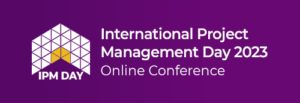By Harold Kerzner, Ph.D.
August 9, 2023
Burnout Growth
For decades, people have been plagued with the fear of burnout. The importance of understanding burnout and its effects appeared in psychosocial literature in the 1970s [Freudenberger (1974), and Maslach (1976)]. The focus was on burnout in people who were working. Since that time, models have been created to measure levels of burnout [Maslach and Jackson (1981), and Kristensen et al. (2005)].
Stress and burnout have been recognized as serious project management problems for years, but until recently companies have been reluctant to face the problems head on. Articles are now appearing addressing burnout specifically in a project management environment [Verma (1996), Haynes and Love (2004), Richmond and Skitmore (2006), Pinto et al., (2014), and Jugdev et al., (2018)]
In many companies, more than 60% of the projects never achieve full or even partial success, and stress and burnout have often been identified as some of the culprits. With an abundance of projects to select from, companies preferred to let these poorly performing projects fall by the wayside and assigned the workers to other promising projects.
Many of the projects we are working on today are strategic rather than traditional projects and may have a serious impact on the future of the organization if allowed to fail. Stress and burnout are now being addressed to identify techniques that can turn around many of these critical projects that are struggling. Techniques have been developed describing ways to recover all or part of the expected business value from a distressed project [Morais-Storz et al., (2020)]. This requires identification of potential causes of poor performance and preventing them from reoccurring during recovery.
Understanding Project Burnout
Project burnout is a state of physical and mental exhaustion resulting from the requirements and constraints imposed on the projects. The impact of burnout on a project manager or a team member is usually a decrease in the team’s performance due to low levels of energy, persistent fatigue, and a lack of motivation. The project may then suffer from missed deadlines, incomplete or poor-quality workmanship, unhappy stakeholders, and a loss of business.
None of us are immune to stress and potential burnout. We all have days where we feel stressed out. However, being stressed out does not necessarily lead to fatigue and burnout unless the stress is persistent. Some project managers thrive on stress and seem to avoid burnout.
There is risk that burnout can spread to the entire team if not identified and controlled. PMs must recognize the signs of stress and burnout as early as possible in the project’s life cycle.
Identifying the Signs
Understanding and controlling project burnout is a three-step process:
- Identify the signs of stress and burnout
- Identify the causes that created stress and eventually burnout
- Identify the steps that can be taken to reduce further issues<
Project managers should not ignore the signs of potential team member burnout. Unfortunately, the signs are not usually taught in most project management courses. Detection of possible burnout comes from observation and encouraging team members to communicate with honesty and tell you if they feel that they are under stress.
Burnout does not happen overnight. It usually occurs slowly. Consistent feedback from employees is needed because not all signs of potential burnout are visible. Burnout can be the result of non-project activities such as poor sleeping habits and loss of appetite. Even with feedback, team members may have mental issues resulting from stress and burnout where they refuse to share with you the truth about how they actually feel.
A great many companies create potential burnout situations for project teams by either accepting projects from clients that contain unrealistic requirements or imposing risky requirements on internal projects. Senior management then creates a high-pressure project environment with the expectation that the project team will meet or exceed expectations. Most projects have periods of stress but usually not prolonged stress over the full duration of the project. Burning out employees should not be seen as a component of the PM’s job responsibilities.
There are several signs that a team member may be burned out. They include:
- Having a low level of motivation for their project assignment
- Disinterested in the project
- Having a “short fuse” and continuously being argumentative even when discussing issues that may be irrelevant
- Loss of one’s sense of humor
- Looking at the project work assignment or the entire project negatively
- A decline in performance and productivity
- Exhibiting procrastination when performing one’s duties
- Making poor decisions or avoiding all decision-making
- Sleep deprivation
- Constant exhaustion
- Taking an excessive number of sick days
Identifying the Causes
Everyone will agree that a project environment is a fertile ground for stress and possibly burnout. Some of the causes of burnout may not be project related but the effects may be compounded once the team members show up for work. Some of the typical project activities that can induce burnout are:
- Being assigned to long projects that workers believe are not in their best interest or support their career goals
- Taking on too much work either by choice or because of project assignments
- Having an unrealistic workload
- Having too many competing constraints
- Working an excessive amount of overtime
- Having poorly defined requirements that may be open to misinterpretation or scope changes
- Having too many scope changes
- Having constantly changing priorities
- Continuously missing milestones and deadlines
- Having poor project leadership or constantly changing leadership
- Having constantly changing governance for the project accompanied by excessive pressure
- Physical exhaustion
Taking Corrective Action
- Focusing on project results rather than hours worked
- Using new approaches such as Agile, Scrum, and hybrid methodologies that may make it easier to manage project stress
- Clearly defining roles and responsibilities
- Prioritizing competing constraints
- Establishing reasonable worker expectations
- Letting team members know how their efforts will contribute to company success
- Limiting overtime
- Subdividing work into smaller tasks
- Encouraging open and honest communication
- Establishing and reestablishing proper priorities
- Making sure team members take breaks
- Demonstrating a willingness to occasionally saying “no” to customers
Conclusion
References
Freudenberger, H. J. (1974). Staff burn-out. Journal of Social Issues, 30, 159/65.
Haynes, N.S., Love, P.E.D., (2004). Psychological adjustment and coping among construction project managers. Construction Management and Economics. 22, 129–140.
Jugdev, Kam; Mathur, Gita; Cook, Christian. (2018) Linking workplace burnout theories to the project management discipline, International Journal of Managing Projects in Business. Vol. 11 Issue 1, p198-221. 24p. DOI: 10.1108/IJMPB-02-2017-0020.
Kristensen, Tage S.; Borritz, Marianne; Villadsen, Ebbe; Christensen, Karl B. The Copenhagen Burnout Inventory: A new tool for assessment of burnout. (2005) Work & Stress. Jul-Sep2005, Vol. 19 Issue 3, p192-207. 16p. 6 Charts. DOI: 10.1080/02678370500297720.
Maslach, C., Jackson, S.E., (1981). The measurement of experienced burnout. Journal of Occupational Behavior 2, 99–113.
Maslach, C. (1976). Burned-out. Human Behavior, 5, 16/22.
Morais‐Storz, Marta; Nguyen, Nhien; Sætre, Alf Steinar, (2020). Post-Failure Success: Sensemaking in Problem Representation Reformulation. Journal of Product Innovation Management. Nov, Vol. 37 Issue 6, 483-505.
Pinto, Jeffrey K.; Dawood, Shariffah; Pinto, Mary Beth., (2014) Project management and burnout: Implications of the Demand-Control-Support model on project-based work, International Journal of Project Management. May2014, Vol. 32 Issue 4, p578-589. 12p. DOI: 10.1016/j.ijproman.2013.09.003.
Richmond, A., Skitmore, M., (2006). Stress and coping: a study of project managers in a large ICT organization. Project Management Journal. 37 (5), 5–16.
Verma, V.K., (1996). Human Resource Skills for the Project Manager. Project Management Institute, Upper Darby, PA.
He has authored or co-authored more than 60 textbooks/workbooks on project management, including multiple editions of his seminal works. His books include Project Management: A Systems Approach to Planning, Scheduling and Controlling; Project Management Metrics, KPIs and Dashboards; Project Management Case Studies; Project Management Best Practices: Achieving Global Excellence; The Future of Project Management; Using the Project Management Maturity Model; and Innovation Project Management.
Dr. Kerzner holds an MS and Ph.D. in Aeronautical and Astronautical Engineering from the University of Illinois and an MBA from Utah State University. He taught engineering at the University of Illinois and business administration at Utah State University, and for 38 years taught project management at Baldwin-Wallace University. A testament to Dr. Kerzner’s profound influence on the field is the establishment of the Kerzner International Project Manager of the Year Award. This prestigious award, presented annually by the Project Management Institute (PMI) which recognizes outstanding project managers who have demonstrated exceptional leadership, innovation, and contributions to the project management profession.
Dr. Harold Kerzner is a Keynote in this year’s IPM Day 2023! Check out his presentation details here.
Disclaimer: The ideas, views, and opinions expressed in this article are those of the author and do not necessarily reflect the views of International Institute for Learning or any entities they represent.







